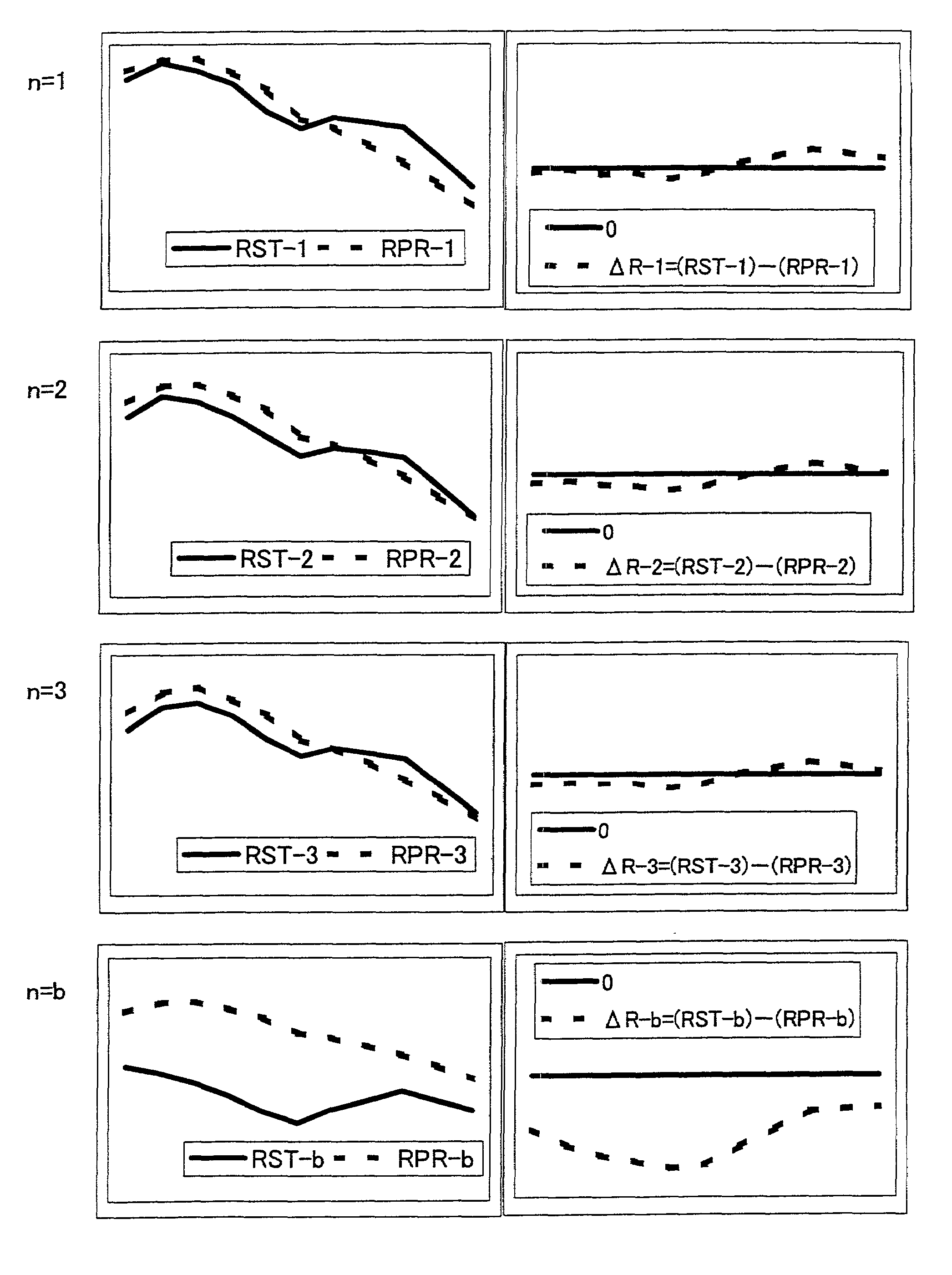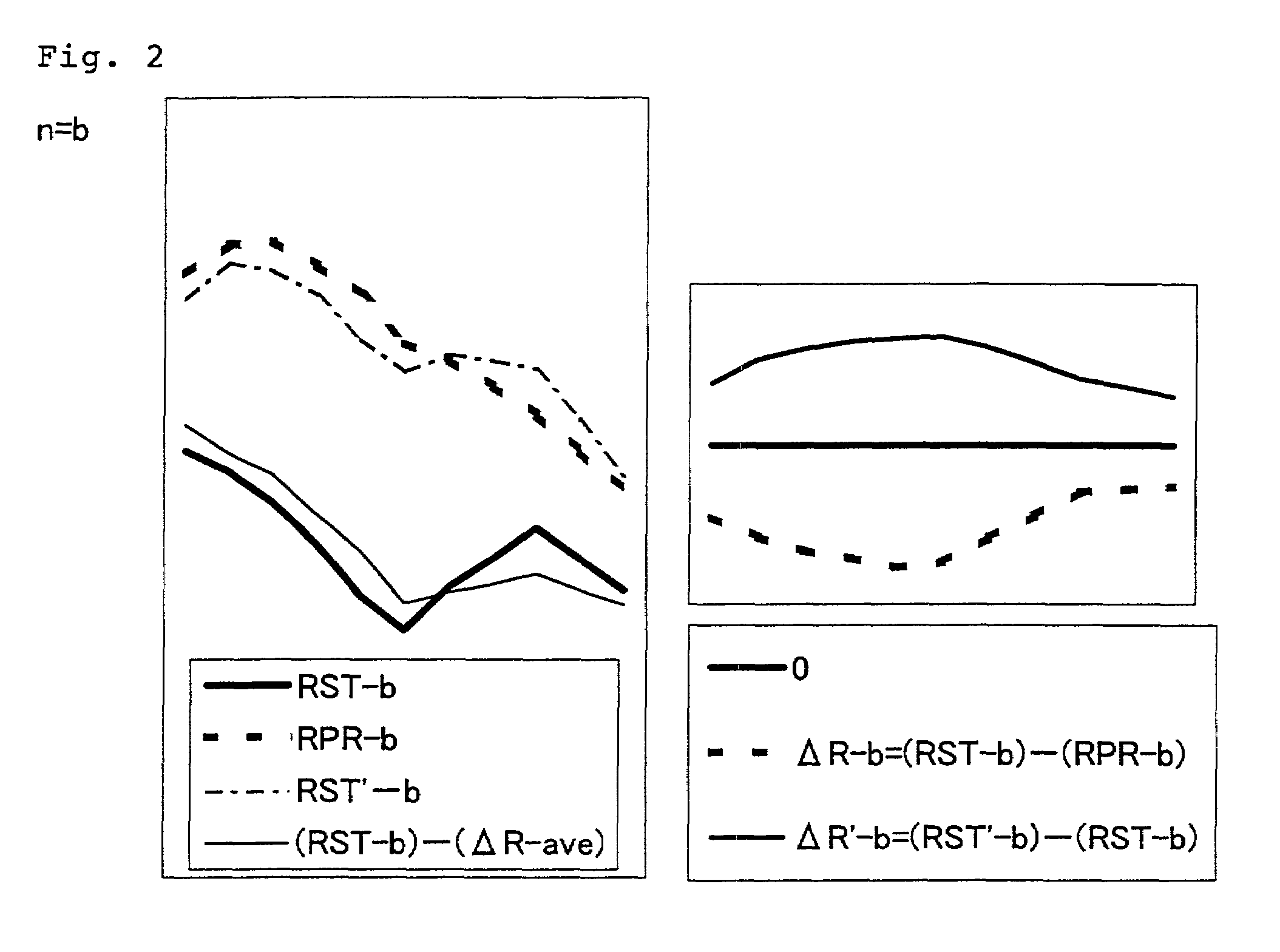Method for evaluating reproducibility of toning sample by CCM
a toning sample and reproducibility technology, applied in the field of evaluating the reproducibility of toning samples by ccm, can solve the problems of inability to achieve reproducibility in many cases, inability to meet the requirements of coloration, so as to achieve the effect of reproducibility
- Summary
- Abstract
- Description
- Claims
- Application Information
AI Technical Summary
Benefits of technology
Problems solved by technology
Method used
Image
Examples
examples
[0065]The following Examples further illustrate the present invention in more detail. For CCM simulation, the 2 constants method of Kubelka-Munk theory was used.
examples 1
[0066](Case I; Case Where a Dispersion-processed Coloring Agent is Used)
[0067]3toning samples were produced for the target color. Samples were produced by kneading a vinyl chloride resin composition (PVC resin compound) and dispersion-processed DA type coloring agent for PVC (manufactured by Dainichi-seika color & chemical MFG., Co., LTD.) at a kneading rate shown in Table 1 (unit is “gram”). Kneading was performed at a temperature of about 170° C. for 2 minutes using two heating rollers. After kneading, the predetermined molding processing was performed to obtain 3 kinds of samples.
[0068]
TABLE 1PVC1st Time2nd Time3rd Timeresin(n = 1)(n = 2)(n = 3)compound100100100Coloring agentDA P4050 (White)0.80.750.75DA P4710 (Black)0.040.0450.045DA P4420 (Yellow)0.100.100.11DA P4620 (Blue)0.060.060.055
[0069]The difference ΔR−n between actually measured reflectance RST−n and simulated reflectance RPR−n for a toning sample according to the above formulation is shown in Table 2. The difference cur...
example 2
[0095](Case 3: Method for Testing an Abnormal Sample Product in a Toning Process in Reproducibility Evaluation)
[0096]A sample group A was produced at the formulating rate (unit is “gram”) shown in Table 10 using dispersion-processed DA color having the excellent developing reproducibility, which was used in the aforementioned Case I. That is, the sample formulation was determined by CCM simulation so that ΔE* is changed by 2 degrees by change of one of three attributes hue (H+), lightness (V+) and chroma (C+) relative to a standard, and an abnormal sample product was produced by adding a heterogeneous coloring agent to a standard product to change ΔE* by around 1 to obtain the abnormal sample formulation b. The sample producing procedure was the same as in Case I.
[0097]
TABLE 10A-standardA-H+A-V+A-C+A-bPVC resin5050505050compoundEP-4050(White)0.84850.84220.86720.83790.8485P-4710(Black)0.05400.05680.04710.04990.0540(1 / 10)P-4172(Red)0.02570.02180.02240.02890.0257P-4420(Yellow)0.07180.0...
PUM
| Property | Measurement | Unit |
|---|---|---|
| temperature | aaaaa | aaaaa |
| wavelength | aaaaa | aaaaa |
| colors | aaaaa | aaaaa |
Abstract
Description
Claims
Application Information
 Login to View More
Login to View More - R&D
- Intellectual Property
- Life Sciences
- Materials
- Tech Scout
- Unparalleled Data Quality
- Higher Quality Content
- 60% Fewer Hallucinations
Browse by: Latest US Patents, China's latest patents, Technical Efficacy Thesaurus, Application Domain, Technology Topic, Popular Technical Reports.
© 2025 PatSnap. All rights reserved.Legal|Privacy policy|Modern Slavery Act Transparency Statement|Sitemap|About US| Contact US: help@patsnap.com



